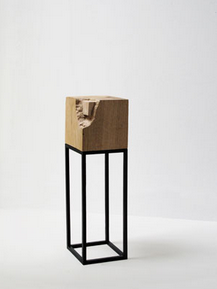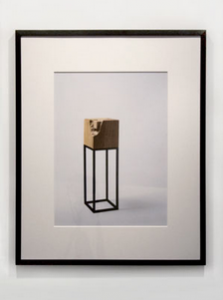
Though interesting enough on their own, these two works by the Berlin-based Danish artist Nina Beier form something entirely new when taken together. In the first (and the order is important), a “horizontal skyscraper” is displayed in (possibly) unfinished form. We say “possibly” because, according to its placard, this “sculpture in process is exhibited or sold on the agreement that the artist might or might not choose to continue working on it.” Though this gesture may seem tired, practiced, potentially disingenuous, it nonetheless strikes a key that reverberates across the “life” of an artwork. For one, the work itself may or may not be finished; which is to say, one may or may not know what one is exhibiting or buying; which is also to say, one may expect more and receive something “less,” the artwork as it already is. It could even be said to undermine the concept of a work of art in the most direct way possible, through the threat that it may only be a rough draft, a scribble. That it depends upon an “agreement” with the exhibitor or owner may even promise to raise legal issues, should the artist choose to exploit that contract in a way that would startle, and no doubt enrage, any party naive enough to not take it seriously. The possibilities, needless to say, are endless – literally.

The work does not “end” there, however. A separate work, “Framing Horizontal Skyscraper Non Finito,” is nothing more than a “framed studio shot of an artwork. When documented during each exhibition, a print of this new photograph replaces the previous one in the frame.” Again, this gesture could easily be mistaken for a tired, pseudo-Modernist reprieve, or for yet another bout of feigned institutional self-reflexivity, if not for the fact that the original work is itself (possibly) “in progress.” Thus a “system” of sorts manages to emerge from this careful delineation. With the modification of the one, comes the modification of the other, and in such a way that it need not end there. “Agreements” could be exploited to complicate still other agreements. Of course, Beier’s formula (and it is at this point that it becomes a formula) could rather easily be be made to grow tiresome, or in any case tedious. But that’s just it: through this clever variation on the artwork that awaits “completion,” this work demands that further steps be taken elsewhere, according to protocol that begin to resemble bureaucratic measures, or at least needless stipulations. It makes a mockery of what it at first seems to be: yet another work that depends upon the viewer’s “realization.”